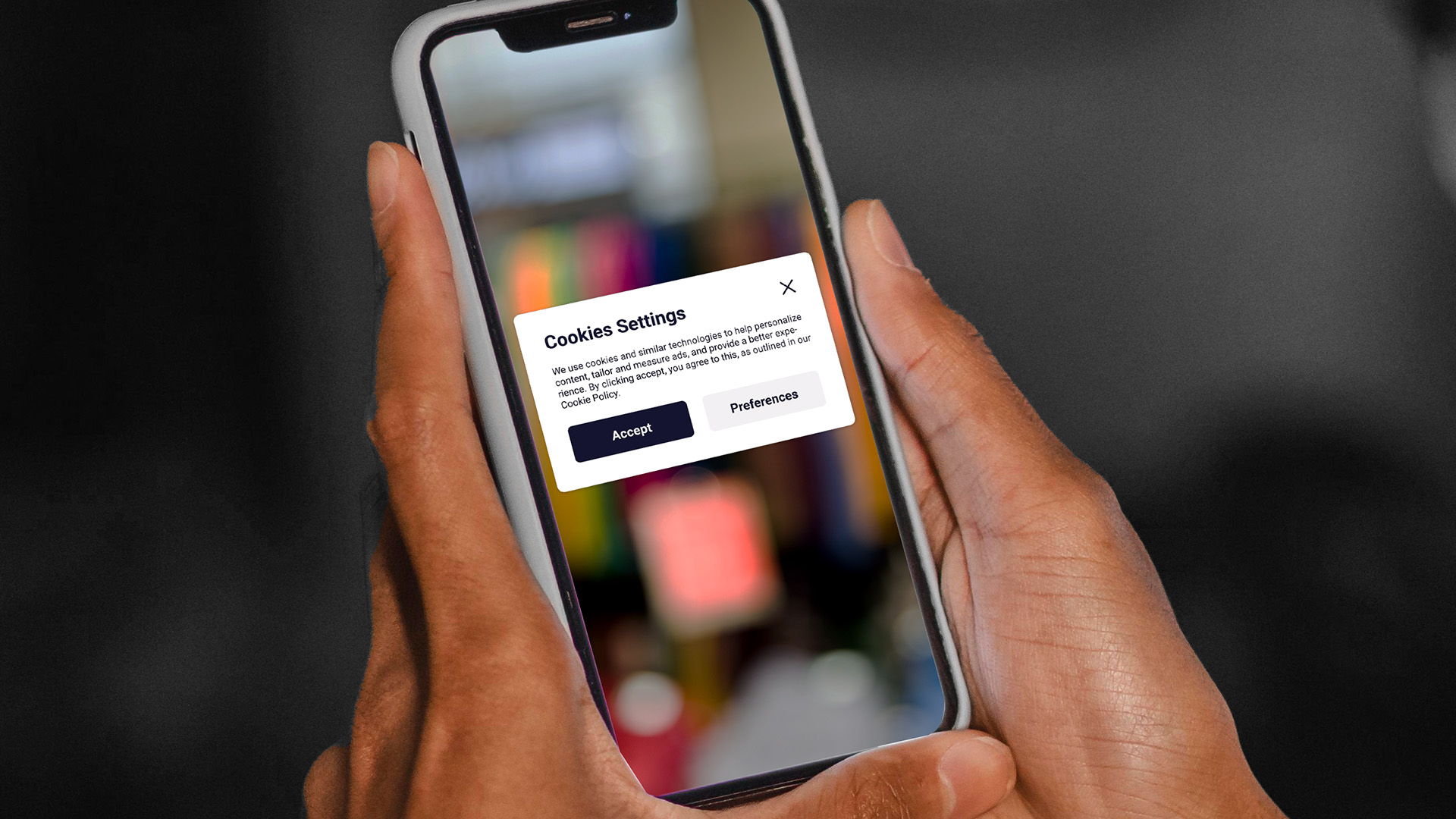
September 19, 2024
AdTech and Marketing
Navigating the Future of Advertising in a Cookieless World
A global study by DoubleVerify reveals that while 60% of publishers express significant concern about the impact of cookie deprecation on their business, only 24% have taken steps to implement a post-cookie solution.
Given the increasing privacy concerns, stricter regulations, and shifting consumer expectations, it’s clear that businesses must act quickly.
In this article, we’ll take a closer look at the challenges these changes pose to advertisers and offer actionable advice on how your business can adapt to an environment where third-party cookies are no longer in use.
What drove the rise of cookie-free advertising?
The rise of cookie-free advertising initiatives became popular when businesses started misusing cookies for unauthorized personal profiling of users, often to increase profits. This practice included capturing personal information such as demographics, interests, lifestyle choices, and financial data. Some key events that highlight the issue include:- In 2012, Google was found to have bypassed privacy settings in Apple's Safari browser, including user-tracking cookies without users’ permission or knowledge.
- In 2017, the Federal Trade Commission (FTC) fined Vizio, a smart TV manufacturer, for tracking consumer behavior online without permission.
- In a highly publicized scandal in 2018, political consulting firm Cambridge Analytica illegally collected personal data on millions of Facebook users without their consent.
What are the challenges of a cookieless future for advertisers?
For years, cookies have been indispensable to marketers, helping them tailor ads and assess the success of their campaigns. However, rising data privacy concerns are limiting how cookies and other tracking technologies can be used. Some major challenges this situation poses are listed below.-
Lack of precision in user tracking
-
Complex legal landscape
3 best practices for advertisers to stay ahead in a cookieless world
To gain an edge in a cookieless world, businesses need new tactics that prioritize user privacy while maintaining ad efficiency. Here are three best practices to navigate this transition:Focus on first-party data
Allison Urffer, senior marketing and research analyst at Geisinger, believes that “with the planned phase-out of third-party cookies, first-party data has become more important than ever.” First-party data, gathered directly from user interactions on your platforms, should become central to your digital advertising strategy. With a reliable CRM and a clear approach to efficient first-party data collection, companies can still deliver personalized offers effectively. Netflix, for example, has been personalizing and recommending videos to users based on behavioral (first-party) or self-declared interest data like genres, actors, and favorite show types for over 20 years. By using its powerful ML algorithm, Netflix has continuously grown its audience. Netflix’s message is simple: "Spend less time picking your next show and get better recommendations from us with just one or two clicks a day to rate the shows." This clear and honest approach has played a key role in building a strong sense of loyalty among their viewers.Employ alternative tracking technologies
In the absence of third-party cookies, companies must explore alternative tracking technologies that are both effective and privacy-compliant. One example is contextual advertising, which targets ads based on the content of the webpage instead of user behavior. In June 2020, The New York Times launched its own advertising data program based on its proprietary first-party modeling and clustering. Instead of relying on cookies, they serve ads based on the content being consumed by users. Additionally, server-side tracking collects data directly from the server rather than through a browser, offering a more secure and privacy-focused way to gather insights.Build custom software
A well-designed custom software solution can help businesses maintain privacy compliance while maximizing ad efforts. By hiring a professional custom software development team, you can create applications with advanced data encryption, anonymization methods, and secure storage to protect user privacy while ensuring a strong ROI on digital campaigns.What are efficient marketing technology solutions in the cookieless era?
Here are seven tools advertisers can use to reduce their dependence on third-party cookies. The key is to gather well-organized, structured first-party data from customers, centralizing it through a Customer Data Platform (CDP) to make it effective with the solutions listed below.Google Privacy Sandbox
Google’s Privacy Sandbox includes technologies designed to enhance online privacy, such as the Protected Audience API (formerly Google FLEDGE), aimed at reducing third-party cookie usage and protecting user data for retargeting. Google’s solutions allow firms to enter their first-party data anonymously into Google’s Clean Room (Google PAIRS) or use it for retargeting through the Protected Audience API. By integrating your first-party data with Google’s API and/or PAIRS, marketing teams can adjust to these shifts and build personalized ad experiences without the need for third-party cookies.Identity management solutions
Platforms like Okta are crucial for managing user identity details across various platforms and touchpoints. By using a CDP to capture and merge these identities into unified customer profiles, businesses can tailor their messaging and promotions based on these insights.Data pools or data clean rooms
Data clean rooms are secure environments where companies can share and analyze data without compromising individual customer identities. These environments are gaining traction as companies explore how to engage with existing clean rooms or establish their own. Major retail ecosystems like Amazon and Walmart are building data clean rooms to create closed advertising environments for brands and affiliates.Publisher-provided IDs (PPIDs)
PPIDs are unique identifiers issued by publishers to help companies track and target audiences across their platforms. By using PPIDs, publishers can collaborate with advertisers to manage the entire ad ecosystem using their global unique identifiers. Successful publishers may invest in a CDP to manage subscribers and user data, while advertisers can work with partners to create a proprietary advertising environment. The synergy between advertisers and publishers using a CDP to harness first-party data, synchronize PPIDs, and monitor related activities can provide valuable insights.Digital fingerprinting solutions
Digital fingerprinting is a technology that identifies user behaviors and preferences based on their unique digital characteristics, such as browser types, screen resolutions, or installed fonts. While this data can be crucial for delivering relevant ads in suitable channels, its primary usage lies in optimizing ad placements to ensure visibility, rather than customizing ads for individual profiles. Solutions like Fingerprint, Shield, and SEON can analyze this data to help build optimal advertising experiences for clients.Advertising automation software
Advertising automation software can help businesses manage the complexities of cookieless advertising by automating tasks such as ad placement, targeting, and reporting. Tools like HubSpot's Marketing Hub offer robust automation capabilities, enabling marketers to execute complex campaigns with minimal manual intervention. By integrating these tools with first-party data sources, businesses can create highly targeted and effective campaigns that comply with privacy regulations.Advanced new martech solutions
These tools enable companies to collect and analyze first-party data, automate marketing processes, and deliver personalized experiences at scale. For example, Adobe Experience Platform allows marketers to unify customer data from multiple sources, providing a comprehensive view of the customer journey without relying on third-party cookies.Conclusion
In this article, we observed the challenges a cookieless future presents to advertisers and provided best practices and solutions to help your business adapt to an environment where third-party cookies are no longer used. By embracing new digital advertising strategies, technologies, and partnerships, businesses can navigate this transition successfully and continue to thrive in the digital age. Kanda Software specializes in developing custom software that enables businesses to collect and utilize first-party data effectively and in compliance with privacy laws. By applying advanced technologies such as AI, machine learning, and secure data storage, we help clients maintain a competitive edge in the ever-changing digital landscape. Want to join the list of companies staying ahead of regulatory challenges? Talk to our experts today.Related Articles

Driving Success in AdTech with AWS SageMaker
The AdTech industry moves quickly. Competition is tough, and companies must manage massive amounts of data in real time to remain competitive. Every choice, whether about ad placement, user targeting, or bid modifications, must be made fast. An AWS report indicates that organizations utilizing SageMaker experience up to a 50% decrease in the time their…Learn More
Securing Competitive Edge for AdTech Companies
In today’s digital age, establishing a robust online presence for your brand is no longer a luxury—it has become an absolute necessity. Consumers are deeply immersed in the online realm, dedicating a significant amount of their time to navigating the digital landscape. Failing to engage and connect with potential customers throughout their online purchase journey…Learn More